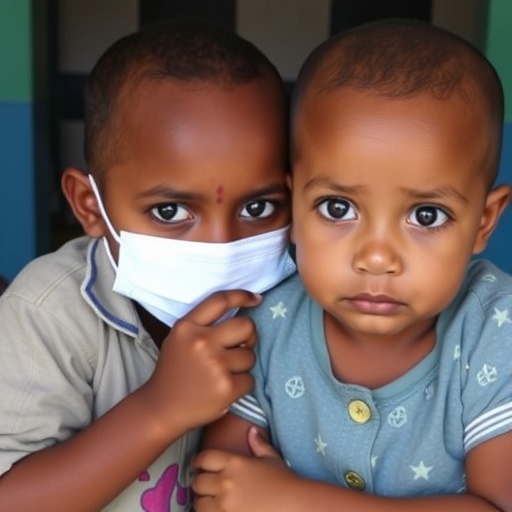
Credit: By doomu
Cambridge, Mass., May 18, 2020 – In response to the COVID-19 pandemic, researchers from the Massachusetts Institute of Technology have published a pair of studies in a COVID-19 special issue of the Harvard Data Science Review, freely available via open access, describing new methods for accelerating drug approvals during pandemics and for providing more accurate measures of the probabilities of success for clinical trials of vaccines and other anti-infective therapies.
“Randomized clinical trials–where patients are assigned randomly to two groups, one receiving a new treatment and the other receiving a placebo or reference treatment–are the gold standard for determining the safety and effectiveness of a treatment,” says Andrew Lo, Ph.D., the study’s senior author and the Charles E. and Susan T. Harris Professor at the MIT Sloan School of Management. “Only when the treatment group shows significant improvement over the control group, will regulators approve the therapy.” He adds, “the current process is designed to protect the public by minimizing the chances of “false positives” (approving ineffective and unsafe therapies), and by and large, it’s been very successful.”
But there is a trade-off between false positives and false negatives (not approving a safe and effective therapy), and Lo and his collaborators have developed a framework that uses an epidemiological model of COVID-19 to calculate the optimal statistical threshold for approving a drug during a pandemic. “In the midst of an outbreak, many lives are at stake so we need to be less concerned about false positives and more concerned about false negatives than during normal times,” says Lo, “In response, we’ve developed an analytic framework that allows regulators to make this trade-off systematically, transparently, and rationally.”
At the core of this new framework–which was jointly developed in collaboration with MIT students Qingyang Xu and Danying Xiao, and former MIT student Shomesh Chaudhuri, Ph.D. (now at QLS Advisors)–is an explicit optimization algorithm designed to minimize the expected loss of life across various scenarios generated by a statistical model of an infectious disease. This algorithm, says Xu, will lead to more drug approvals during outbreaks, not unlike the U.S. Food and Drug Administration’s Emergency Use Authorizations (EUA) program. “Our framework complements the EUA, allowing regulators to incorporate loss-of-life considerations quantitatively during periods of extraordinary stress,” explains Xu, the lead investigator of the study.
In a companion study authored by Lo and MIT Ph.D. students Kien Wei Siah and Chi Heem Wong, the MIT researchers estimated the probabilities of success (PoSs) of clinical trials for vaccines and other anti-infective therapies using the Citeline® dataset provided by Informa Pharma Intelligence, part of UK-based publishing company, Informa®. This dataset includes 43,414 unique triplets of clinical trial, drug, and disease over the past 20 years, yielding over 2,500 vaccine programs and more than 6,800 nonvaccine, anti-infective programs, the largest dataset of its kind.
“The PoS is a key input into each major decision of every biopharma company about which disease to tackle and how much resources to devote to it,” observes Lo.
Because a successful clinical trial can mean billions of dollars in revenues, small changes in PoS can lead to very different business decisions. Therefore, having timely and accurate measures of PoS is critical–and often, these better measures of risk and reward allow investors to put more capital to work.
The overall estimated PoS for industry-sponsored vaccine programs is about 40%, which is the highest among all disease groups (by comparison, the PoS of cancer trials is, historically, less than 5%), and 16.3% for industry-sponsored nonvaccine, anti-infective programs. Viruses involved in recent outbreaks–Middle East respiratory syndrome (MERS), severe acute respiratory syndrome (SARS), Ebola, and Zika–have had 45 nonvaccine and 35 vaccine development programs initiated over the past two decades, and there have been only two approved vaccines to date (for Ebola). This points to a clear need for new policies to address this gap.
“As governments around the world begin to formulate a more systematic strategy for dealing with pandemics beyond COVID-19, these estimates can be used by policymakers to identify areas most likely to be underserved by private sector engagement and in need of public sector support,” said Wong, the study’s lead author. These results are part of Project ALPHA (Analytics for Life-sciences Professionals and Healthcare Advocates)–an ongoing initiative at the MIT Laboratory for Financial Engineering (LFE) where Lo is director–to help make the biomedical funding ecosystem more efficient. “We now provide this information on a regular basis, it’s not just a one-shot deal,” Lo says. Users can obtain the most current PoS estimates at https:/
###
About the Harvard Data Science Review
The Harvard Data Science Review is the open access platform of the Harvard Data Science Initiative, published by the MIT Press. HDSR publishes high quality content that helps to define and shape data science as a rigorous field of study with global impact. Established in 1962, the MIT Press (Cambridge, MA and London) is one of the largest and most distinguished university presses in the world and a leading publisher of books and journals at the intersection of science, technology, art, social science, and design. MIT Press books and journals are known for their intellectual daring, scholarly standards, interdisciplinary focus, and distinctive design. For almost 50 years, the MIT Press journals division has been publishing journals that are at the leading edge of their field and launching new journals that have nurtured burgeoning areas of scholarship.
Harvard Data Science Review, Chaudhuri et al. “Bayesian Adaptive Clinical Trials for Anti-Infective Therapeutics During Epidemic Outbreaks” https:/
Harvard Data Science Review, Lo et al. “Estimating Probabilities of Success of Vaccine and Other Anti-Infective Therapeutic Development Programs” https:/
Media Contact
Paul Denning
[email protected]
Related Journal Article
http://dx.




